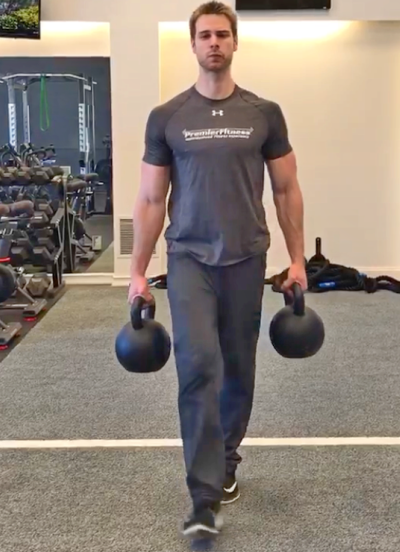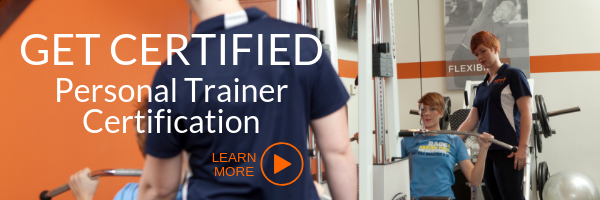Exercises that deliver the most value are my favorite exercises for clients (as well as for my own training). These exercises are typically simple in the sense of, the exercise doesn’t require any complex movements or “flash” but instead, work as many muscle groups as possible while reducing the chance of injury.
The farmer’s walk is a great example of a simple exercise. You are only carrying a load from one end of the gym to the other in a slow controlled tempo and it’s hard to do it incorrectly.
Muscles worked in farmer’s walks
The full body is working together with an emphasis on Trapezius (upper back), middle and rear deltoids (shoulders), Brachioradialis, hip stabilizers (entire core) and rectus abdominus.
Farmer’s Walk Instructions
1. Pick up a pair of dumbbells or kettlebells in each hand (crush the handles)
2. Stand tall with dumbbells out to the sides a couple of inches (do not let the weight touch your legs)
3. Look straight ahead and pinch your shoulder blades (scapula) back slightly
4. Keep your core tight
5. Walk slowing and with small steps
Common Mistakes
- Looking down; Chin down
- Rounding the back
- Weights touching your sides
- Forward neck posture
Why should you program farmer’s walks into your programs?
- Every muscle group is involved
- Total body great for core and hip stability; think of a moving “plank.”
- The entire body has to stabilize and brace to maintain an upright posture
- The upper back which in my opinion is often overlooked when training, gets a tremendous amount of work in order to keep the chest and shoulders from slouching.
- Whenever you are moving with weight, your legs are working which creates a great cardiovascular demand (anaerobic effect) which helps increase Excess Post Oxygen Consumption also known as the after-burn effect where your body has to work harder, more calories burned to bring yourself back to resting levels post workout.
You will also strengthen your grip, increase workout capacity, build bone density, and simply get your clients stronger. The grip strength alone makes this exercise a great choice.
Did you know that there is a strong correlation to grip strength and quality of life? Older populations that have greater grip strengths are showing to live better and more independent lives compared to others who tested with weaker grips.
Programming farmer’s walks based on clients’ goals
If you are looking for strength, shorten the distance of the farmer’s walk to 45-90 feet using heavier loads (never sacrificing form regardless of load). Typically longer rest is required between sets and are better when not paired with other grip focused exercises such as deadlifts and chin-ups. 3-4 sets
If you looking for Hypertrophy (muscle size), I suggest 90-180 feet using moderately heavy weights. This alone could be a great finisher, challenging both your muscles and your mental focus. 2-3 sets
If you are looking for endurance, 180-300ft with lighter loads. This will not be pleasant but will get you a nice pump to your muscles. 1 set should be all you need.
Who should do farmer’s walks?
Just about anybody should be doing the farmer’s walk. Full body strength to bone density should be reasons enough. As with any exercise, start out with light loads and always have your clients master the form before progressing with heavier weights. Go on, practice, and coach your clients to even greater results.




